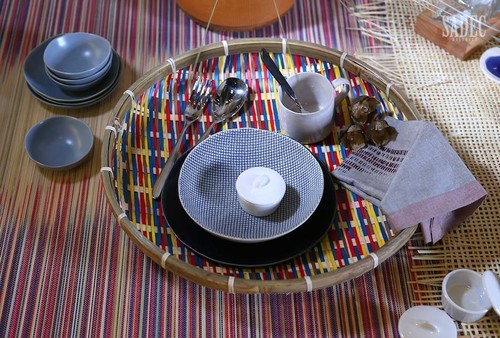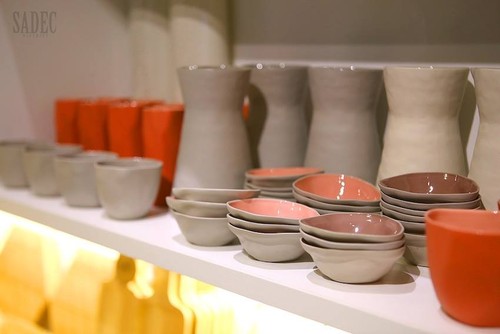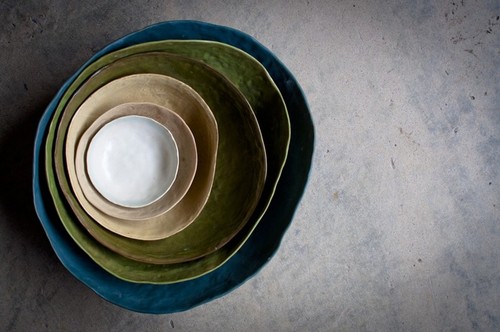(VOVworld) - Running through 6 countries with an estimated length of 4,350 km, the Mekong is the longest river in the southeast Asia region and is home to many unique cultural features, including ceramics. Made by generations of Thai, Cambodian, and Vietnamese people, ceramic products from this region are considered by many people to be the fine art of commoners, even today. Dieu Ha has the story.
Ceramics reflect the culture, technology and lifestyles of the people who made them. By looking at materials, colours, and shapes, experts and collectors can tell which ceramics belong to distinct groups. In Asia, China is famous for detailed white-and-blue decoration on porcelain, Japan is well-known for Imari pottery with various colourful coating glazes, and Korean products are popular for thier motifs drawn in iron-brown pigment. Meanwhile, pottery from the Mekong River’s lowlands, including Thailand, Cambodia and Vietnam, is unique for its rusticity and unusual characteristics: it was made by and for the common class to use in their everyday lives.
 |
Mekong ceramics with the taste of rusticity and simpliness.
Source:
|
Ha Tan Cuong is among the co-founders of Sadec District, a popular ceramic store among Vietnamese people that sells rare hand-crafted regional ceramic products. But customers don’t realise that he spent almost 7 years scouring lands in Southeast Asia where the Mekong River flows in search for the finest pottery before starting his business. To him, the most distinctive features of ceramics from this region are the production of pottery without the use of a pottery wheel and the use of cloth fabric to make decorations.
“We call the ceramics from the Siem Reap region of Cambodia the Khmer ceramics. The signature clay has a darker colour because it is soil mixed with sand, which is very difficult to work with. Yet the people here were still able to build Angkor Wat and produce their own ceramic products. You see, the products are not perfectly round like those made with pottery wheels. Khmer people use their bare fists as a center mold, around which raw clay is applied to create the round shape. That’s why each product is unique. Chiang Mai in Thailand also has the same modelling technique, but since they are famous for traditional textiles and garmentss, they understand the beauty of cloth fabric. Thus, they imprint cloth into the raw clay to create rows of slots. After that, they use a special blue glaze to highlight those slots and leave the final products with simple, rough patterns”.

Patterns created by inprinting cloth into raw clay in Mekong region.
In Vietnam, unlike the Red River Delta in the North that produced the better-known white stoneware with heavy influences from Chinese art, communities in the Mekong Delta make brown ceramics, either unglazed or coated with a dark slip-glaze. It is the natural feeling of soil that people want to preserve. Cuong again:
“Normally ceramic products are glazed inside out for colouring or for hygienic purposes, but not ceramics from Southern Vietnam like in the area of Sa Dec, Dong Thap. The people here love and appreciate the feeling, the sense of touch of raw clay. That’s why the products’ outsides are left uncoated for you to touch the rough soil directly. They know how make the best use of the natural beauty of soil and clay”.

“... the products’ outsides are left uncoated for you to touch the rough soil directly. They know how make the best use of the natural beauty of soil and clay.”
Source: Official Sadec District
In history, centers of human society and culture were usually established near big rivers or coast. The Mekong is not an exception. Here the rich silt land nurtured a prosperous society, whose culture includes the fine art ceramic production in mainland Southeast Asian countries. With a history possibly dating back as far as the second millennium BC, each ceramic product from the Mekong lowlands is an accumulation that history, the generation-to-generation transfer of skills and experiences and the hard work of ceramic makers. Nguyen Ha Huong is a young architect in Hanoi who has a real passion for using traditional local stoneware in her interior design work.
“Thai, Cambodian and Vietnamese people have their own traditional techniques to make ceramics. Take the temperature to bake the ceramics for example, they are all different depending on the texture of the clay and the purposes of the makers. However, in general, each product takes up to 70 days to be baked inside a kiln to achieve the best quality. Each kiln might consume up to one hundred tons of rice husks. The furnacing job is not easy at all. You have to consistently keep the flame at a moderate level, in accordance with the outside temperature and the weather. If the temperature in the oven is too high, the ceramic products will crack and break apart. On the other hand, if the heat is too low, the product will be too soft and poor in quality. Arranging the objects inside the kiln is also another hard job. You need to create enough space inside for even heating so that no place is over or under-heated”.
Like many other traditional forms of culture such as dance, theatre or drawings, in the Mekong region, ceramics are created and developed among the farming community, who put the breath of agricultural life in them. Huong again.
“I think the art of ceramics reflects the culture in many ways. In the Mekong lowlands of Thailand, Cambodia and Southern Vietnam, people are mostly farmers and thus the ceramics shows features of agricultural life. There is no need for fancy decorations of flowers, dragons or scenery like in other Asian regions. There is also no need for sophisticated molding. The products are not for show, they are made to be used and thus they are simple, with a rural taste. But that’s the charm of the ceramics from our region”.
It’s true that the rough but skillful hands of farmers in the Mekong river area have produced ceramics with a distinctive charm that cannot be mistaken for pottery from any other region. Cuong said:
“If you have enough knowledge and background, you can see that each type of ceramic product has its own strength. Take Vietnam for example, we cannot ceramics from Japan or China in term of values that they have already perfected, such as the sophistication of details. If Chinese products were used by royalty, Japanese products might be for the upper class, so Vietnamese products are for modern urbanists. We have our distinct targeted customers and there is no need to reach for other foreign values. People used to think that ceramics should be thin and light but that is not always true. The traditional Vietnamese ceramics tend to be thick and heavier, so that a rice bowl can be held firmly in your hand. Our products have a rustic value for those who love minimalism. To me the unique shapes represent the potter’s creativity and emotions when making the ceramics”.
 |
Contemporary artisans bring into traditional products the taste of modernity
Source: Handmade Chiangmai |
In late November, Ha Tan Cuong and Sadec District opened a three-day pop-up store in Hanoi to introduce ceramics and other traditional handcrafted merchandise from the Mekong region to local people. The positive response demonstrated the customers’ appreciation for the rough and rustic beauty of soil seen in each product. With the rise of minimalism as a major trend in world’s fashion, small groups that preserve traditional ceramic art are likely to survive and grow well in the future.